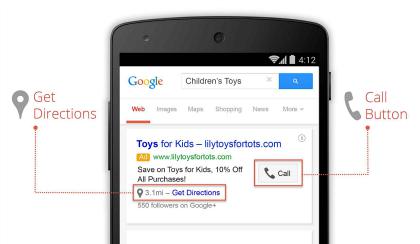
Mobile advertising is a form of advertising via mobile (wireless) phones or other mobile devices. It is a subset of mobile marketingSome see mobile advertising as closely related to . online or internet advertising, though its reach is far greater — currently, most mobile advertising is targeted at mobile phones, that came at an estimated global total of $184.91 bn in 2018 .“People are spending a disproportionate time on their mobiles as compared to other mediums like TV, laptop and tablet, which is the main reason for advertisers to put their money in there
the number of Indians accessing the Internet over mobile devices expanded from less than 100 million in 2010 to nearly 300 million at the end of 2014. This is likely to double to 600 million by 2020, which presents a huge opportunity for marketers.
“mobile advertising,”consist of mobile banner ads, mobile search results. Mobile advertising industry is expanding to encompass many different formats and interactive experiences.
target users based on their geographic location. Being able to target people on a very local level while you know that they are using their phone to search (i.e. likely to be out and about) is very powerful. helpful for local businesses will have increasing control over getting their offer in front of consumers just at the right time to engage in an offline interaction or purchase (e.g. someone searching for pizza from their phone in a particular city). you can offer consumers what they need, when they need it, where they need it
smartphones includes video and interstitial screens. vibrating capabilities of a smartphone to help convey a message – In addition to new technology making ads more engaging with video and audio, many big brands are using mobile advertising to create more interactive experiences. For example, McDonald’s ran a mobile advertising campaign offering people some free “smart advice” from a wise old man. After tapping the banner ad, users can ask whatever questions they want, and they hear an answer via audio from their smartphone. For an even more ambitious interactive ad campaign, Coke and Google teamed up to create a massive mobile ad campaign to “Buy the World a Coke” (inspired by the classic Coke ad from 1971). In the Coca-Cola mobile ad campaign, people are asked (via mobile ad) if they would like to send a free Coke to someone else around the world. Then the free coke is given away at a specially outfitted Coca-Cola vending machine in cities in South America, Africa and elsewhere, and the recipient can record a video greeting thanking the sender for the free coke. The whole campaign is optimized for social media – so people can “give away” a free Coke, and then share the friendly message from a stranger on the other side of the world. These examples are part of a broader trend spotlighted in a recent study by the Mojiva mobile ad network, which predicts that rich media mobile advertising will grow 365% between 2012 and 2016.
One of the early skeptical attitudes toward mobile advertising was that “people don’t want to buy things from their phones.” But in the past few years, consumers have become more comfortable using their smartphones and mobile devices to shop and complete purchases. According to the Mojiva study, mobile shopping and m-commerce are the fastest-growing categories of mobile ads, growing from 4% to 11% of that network’s total ad impressions.
Mobile ads have gone from being just a smaller version of online display ads to being a unique medium of communication that can help influence and drive the buying process. Beyond just creating brand awareness, mobile ads are now creating unique location-based and social media-friendly interactive experiences that can deepen a customer’s relationship with a brand, or even close a sale. As technology continues to improve, as people become more comfortable shopping and buying from their mobile devices, and as companies become more sophisticated about reaching consumers where and when they want to receive offers, we expect that mobile advertising’s role will continue to expand in exciting new directions.